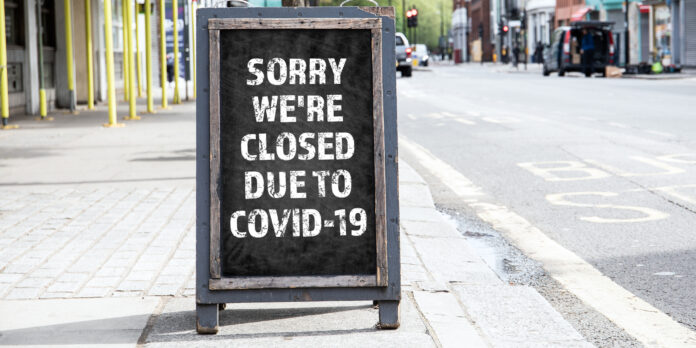The U.S. economy contracted by 5 percent over the course of the first quarter, the first such decline in more than a decade, and the near-certainty of an additional reduction of economic activity for the second quarter indicates the nation has entered a deep recession.
Adding the trillions of dollars of economic coronavirus stimulus/relief to the trillion dollars of debt the U.S. government was already committed to accumulate this year before the crisis hit, puts the nation in seldom-traveled territory. The Committee for a Responsible Federal Budget forecast on FOX News the federal budget deficit will reach $3.8 trillion this year, the same size as the overall U.S. economy. The nation has not had such a high debt-to-GDP ratio since World War II.
Economic history shows that, in general, “The worse the recession, the stronger the recovery,” budget analyst Peter Ferrara wrote in a 2016 study for The Heartland Institute. “Coming out of a recession, the economy historically has grown faster than normal for a while to catch up to its long-term economic growth trendline.”
In the eleven recessions between the Great Depression and the Great Recession, “the economy recovered all jobs lost during the recession by an average of 27 months after the prior cyclical peak (when the recession began),” Ferrara observes.
Ferrara says the unusually weak recovery after the Great Recession of 2007-2009 was caused by a rapid explosion of federal government spending (from 20.2 percent of GDP in 2008 to 24.4 percent of GDP in 2009). In general, steep recessions lead to fast and strong recoveries, provided the federal government refrains from trying to stimulate the economy through higher spending, debt, and taxes, Ferrara notes.
In a recession such as the United States is now experiencing, the proper federal government response is to cut taxes and spending and roll back regulations wherever possible, economist Robert P. Murphy explained at Fee.org in 2009. As the respective responses to the 1920-1921 depression, the stock market crash of 1929, and the various recessions since have shown, neither the Keynesian (increasing government spending and debt) nor the monetarist (increasing the monetary base to keep the overall money stock consistent) solutions have been successful, Murphy notes.
Murphy cites President Warren G. Harding’s response to the 1920-1921 recession as the right approach. Harding’s administration cut spending from $18.5 billion in 1919 to $6.4 billion in FY 2020 and $3.3 billion in 2022, Murphy notes. Instead of trying to increase liquidity by lowering interest rates as a way to “prime the pump” and keep prices stable, the Federal Reserve raised its discount rate to 7 percent and allowed prices to fall, a response it has avoided in subsequent recessions.
The result, as Murphy reports, was a smashing success. Unemployment fell from 11.7 percent in 1921 to 6.7 percent in 1922 and 2.4 percent in 1923, setting off the long economic boom of the “Roaring ’20s.”
Congress and President Donald Trump have responded to the current recession with a very different policy mix which combines elements of all three persuasions (Keynesian, monetarist, counter-cyclical): radically increasing government spending and keeping the money supply as loose as possible while spreading helicopter money to the public through stimulus checks and temporary tax decreases. In addition, the Trump administration has continued its attempts at economic deregulation, an action with which Ferrara and Murphy would agree.
Echoing Murphy’s findings, Ferrara’s analysis indicates that a full and fast, “normal” recovery will require a swift end to the various attempts at economic stimulus.
“The focus should turn instead to policies proven to maximize incentives for increased production, in particular Reagan’s successful ‘supply side’ economics, to replace the ‘demand side’ policies of the failed Keynesian pipedream,” Ferrara wrote in his 2016 study.












[…] From the time the American central bank was established in 1913 and began operating in 1914, the U.S. economy has been on rollercoaster rides of booms and busts, inflations and recessions, and fluctuations in economy-wide employment and output. The Federal Reserve used its new powers to fund a good part of the government’s military and related expenses during the First World War, with a resulting high inflation followed by a short-lived postwar deflationary depression. […]
[…] least a century, with the short depression of 1920-1921 a close second. The latter depression was quickly remedied by the Harding administration’s swift action to cut government spending by 82 percent, decrease taxes, and allow interest rates to rise and […]